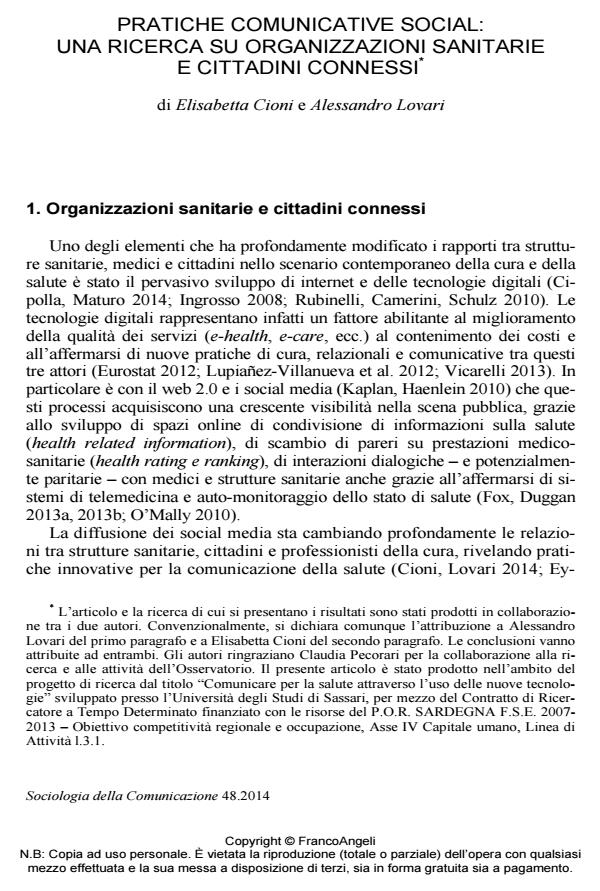Social media practices between health organizations and networked citizens: an empirical study
Journal title SOCIOLOGIA DELLA COMUNICAZIONE
Author/s Elisabetta Cioni, Alessandro Lovari
Publishing Year 2014 Issue 2014/48
Language Italian Pages 13 P. 47-59 File size 207 KB
DOI 10.3280/SC2014-048005
DOI is like a bar code for intellectual property: to have more infomation
click here
Below, you can see the article first page
If you want to buy this article in PDF format, you can do it, following the instructions to buy download credits

FrancoAngeli is member of Publishers International Linking Association, Inc (PILA), a not-for-profit association which run the CrossRef service enabling links to and from online scholarly content.
This paper highlights the challenging process involved in social media adoption by Italian local health authorities. After reviewing the relevant literature on the role of social media for health, we focus on how these platforms are modifying health communication in Italy and present the main results of an exploratory study. The authors report three different empirical results: a) a map of local health authorities’ presence on the social web, b) a content analysis of messages published on the Facebook timelines of Italian public health organizations, and c) data from interviews with healthcare communication managers highlighting the implementation issues, managerial implications and constraints that influence the use of social media by such organizations.
Keywords: Health communication, social media, public communication, digital practices, health organizations, innovation
- Comunicazione pubblica e performance nella sanità digitale: trasparenza e accountability per un empowered patient Gea Ducci, in SOCIOLOGIA DELLA COMUNICAZIONE 51/2016 pp.120
DOI: 10.3280/SC2016-051008
Elisabetta Cioni, Alessandro Lovari, Pratiche comunicative social: una ricerca su organizzazioni sanitarie e cittadini connessi in "SOCIOLOGIA DELLA COMUNICAZIONE " 48/2014, pp 47-59, DOI: 10.3280/SC2014-048005